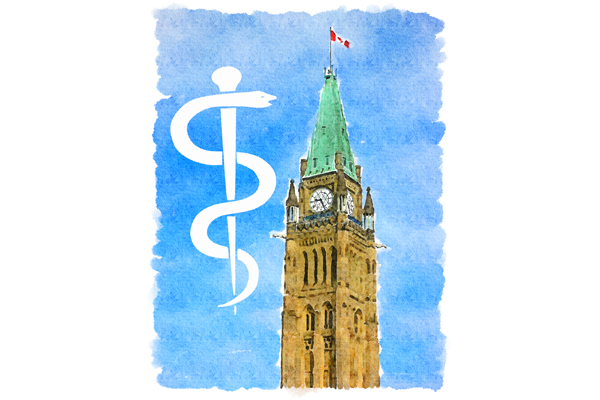Canadian health organization should get back to promoting health policies
Photo courtesy of Marta KierkusAt its 147th annual meeting and general council in August, the Canadian Medical Association (CMA) once again took aim at the federal government for its apparent inaction in healthcare. However, pointing fingers at the Harper government and demanding “brave leadership” is a lackluster strategy that does nothing to actively improve any of the many ailments that affect our healthcare system.
If reform of our inordinately expensive system—which provides fairly mediocre care—is truly a priority for the CMA, they should give up the constitutional blame game and move towards actively advocating for positive change to Canada’s healthcare policy.
They should start doing so by picking a single quantifiable reform issue and run with it. There are a myriad of such issues that deserve their full attention. To be fair, many of these reform issues were discussed at length during the recent annual meeting that ran Aug. 17–20, but the media coverage of this event still focused on primarily on the political angle.
If the CMA is to have an effective voice or impact on future election campaigns and results, then they must strive to meet the greater Canadian electorate’s demand for specific health system reforms. They should not just clumsily hope to have us collectively blame the federal government and angrily storm Parliament Hill.
In reality, the Constitution Act grants provinces the lion’s share in healthcare, including jurisdiction over hospitals and direct delivery of most medical services, while the federal government has mostly spending power as its main constitutional responsibility in the realm of healthcare.
The fact that this federal government has a stricter interpretation of the Constitution when it comes to healthcare—in that they believe provinces should be responsible for providing effective cost-efficient healthcare—is nothing new.
Besides, the supposed problem of federal inaction in healthcare largely predates this Conservative government. A brief examination of the evolution of Canadian Medicare shows a slow but substantial deterioration of the federal role, for better or for worse. It is also important to note that legislative contributions to the scaling down of its role have come through both Liberal and Conservative federal governments.
Furthermore, what is the CMA’s definition of federal leadership? Constitutional reform? Let us hope not. What have past federal governments done that this current one has not? Therein lies the major flaw with their unequivocal blame of the federal government—there is no proper definition of what they believe is missing or what they hope to see in the future.
Currently, what we have are 10 provincial and three territorial healthcare systems in need of short-term reform targets. We don’t need any more talk of politics.
Constitutional jurisdiction is “inside baseball.” The sooner the CMA realizes this, the sooner their messaging and media coverage can be more relevant and more helpful for the healthcare reform this country needs. The organization should put forth more of an effort to propose and promote specific innovative health policy to provinces and their citizens, since these citizens are both the patients of their respective provincial healthcare systems and the electors of their respective governments.
“Quit pointing the blame at everyone else,” former CMA president Dr. Louis Hugo Francescutti told delegates during the meeting. The CMA, as the national voice for the highest standards of health and healthcare, needs to do exactly that.





